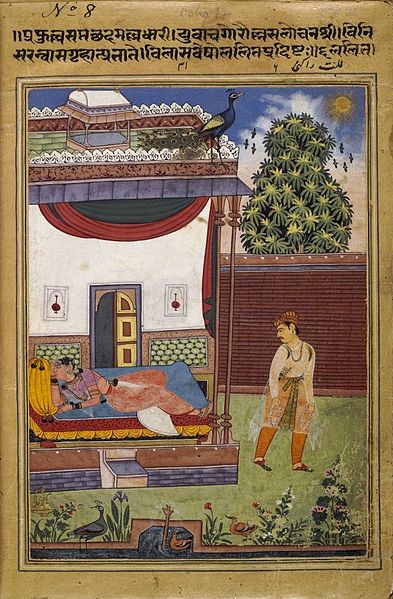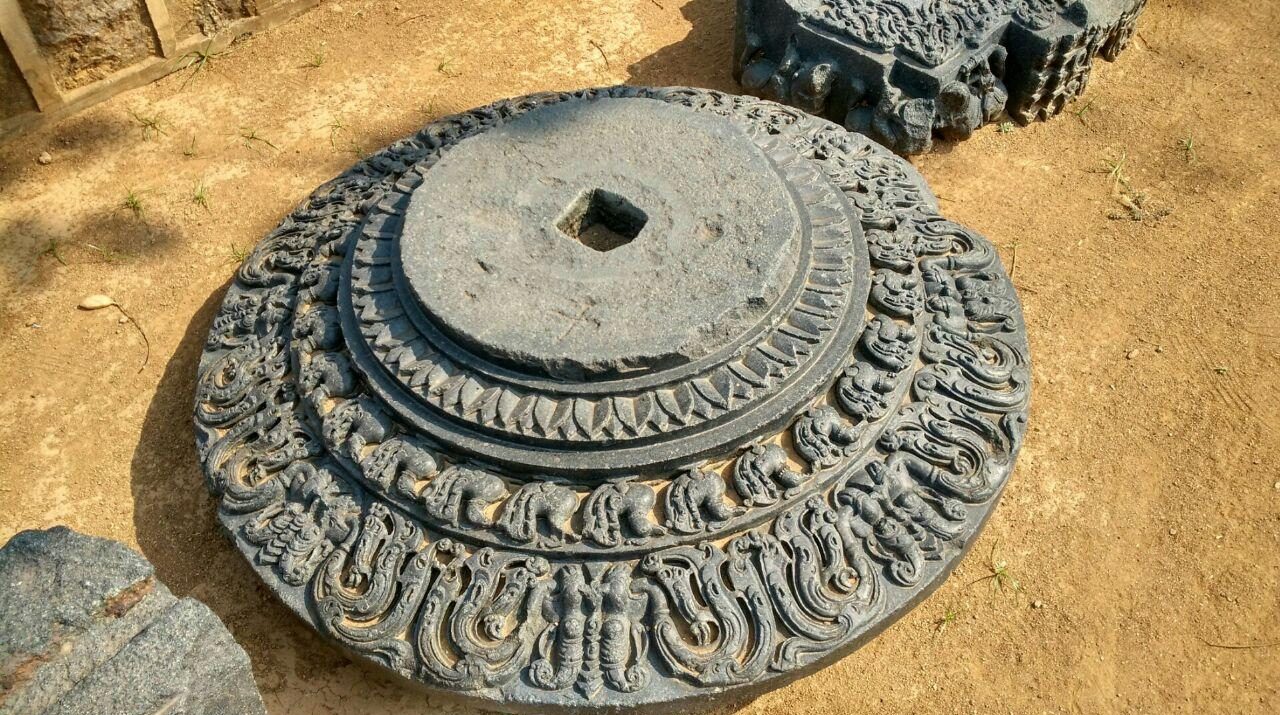#Didyouknow that the word Ragamala means ‘a garland of ragas’?
What is a raga? It is a musical mode, a melody. The raga expresses a sentiment or bhava and has a personality of its own.
They are an amalgamation of art and classical music, which flourished during 16th to 18th centuries. With the introduction of paper royals and noblemen both Hindu and Muslim commissioned miniature painting including Ragamalas. Mughal Emperor Akbar too commissioned Ragamala paintings. Music has been part of the Indian ethos since yore. The ‘Natyashastra’ of Bharata from the 2nd century is an early treatise on fine arts and describes Indian musical theory; which also covers dance and drama.
A ‘raga’ has been defined as ‘’a permutation and combination of notes or frequencies illustrated by melodic movements which are capable of producing a pleasant sensation, mood or an emotion in the mind of the listener’’. There are six main ragas and each raga has five raginis or wives and 8 ragaputras or sons. The 6 main ragas are Bhairava, Dipaka, Sri, Malkaunsa, Megha and Hindola. Bhairava is depicted as a form of Lord Shiva, Malkaunsa is a human lord and his ‘raginis’ are thought to be dyed in the colour of love. Raga Hindola is depicted by a swing usually with Lord Krishna with consort with attendants and there might be rain happening in the background. Raga Dipaka is associatd with fire and light. Raga Sri is named after Goddess Lakshmi and is depicted with the presence of a ‘kinnara’, a heavenly musician in Ragamala painting . During the 14th century, musical literature included a description of the ragas in short Sanskrit verses called ‘dhyana ‘contemplation). This highlighted the characteristics of the ‘raga’ giving them a personality. This led to the ‘raga-ragini’ system and saw the growth of Ragamala painting on different media.The Ragamala paintings show the raga as a human, divine or semi divine being. The themes cover ‘shringara’ and ‘bhakti’ among others, with the ‘raga’ or ‘ragini’ name inscribed along with the ‘dhyana’ (contemplation) or the verse. The main ‘ragas’ have five wives, the ‘raginis’ and each couple have eight children called ‘ragaputras’.
Ragamala paintings were created in most schools of Indian painting, as Pahari Ragamala, Rajput Ragamala, Deccani Ragamala, and Mughal Ragamala paintings. This form is a thus a depiction of music in art. Ragamala paintings are now found in palaces, museums, libraries and private collections all over the world.
Medieval miniatures captured the blending of colour and music to produce paintings of timeless value. Almost every school of miniature painting have produced ‘ragamala’ paintings. Mughal, Malwa, Bundi, Kotah, Mewar, Bikaner, Kangra, Basholi, Kullu, Chamba, Bilaspur, Jammu and the Deccan.
Miniature painting which started in India around the 7th century, evolved from wall spaces to a smaller space like the palm-leaf, cloth, bark, parchment and paper. Painting used to be a subject at gurukulas. During Mughal times music flourished during the reign of Akbar. Also he got illustrated the Tutinama, Hamzanama, Anwar-i-suheli, the Baburnama and the Mahabharata translated and illustrated as Razmnama. Emperor Jahangir chose themes like pleasure and pasttimes, court life, portraits, holy men, birds, animals and flowers. Emperor Shahjahan preferred sophisticated and gold embellished portraits, court scenes, scenes of get togethers and animal portraits. Emperor Aurangzeb did not favour art and music while Emperor Muhammad Shah revived the art form with scenes of enjoyment.
Few 'ragamalas' from the Rajasthani schools are depicted below -
Rag Hindola shows a king on a swing surrounded by attendants. This ‘raga’ is depicted usually with Lord Krishna and Radha on the swing along with ‘gopikas’ or cowherd girls.

‘Nat ragini’ is usually to depict the martial aspect of man. So we see a battle scene in the composition.

Sarang raga is usually depicted with the images of Radha and Krishna at Vrindavan. This composition shows two nobles with musical instruments in a temple setting with peacocks.

‘Vasant ragini’ is depicted with Krishna along with ‘gopis’ or cowherd girls. The season of spring with blooming trees. The scene is one of celebration. Gopis holds musical instruments, Krishna is in a dancing posture with a ‘veena’. A Gopi holds a pitcher, maybe coloured water.

‘Devagandhari ragini’ is depicted as a lady who has become an ascetic after separation from her beloved.

‘Gunakali ragini’ is a lonesome woman who is waiting for her beloved. She is seen here with flowering plants and a peacock in the foreground.

Dhanashree ragini is seen passing time with her ‘sakhi’ or confidante on a terrace. An elephant with an attendant is also part of the composition.

‘Khambavati ragini’ is usually depicted as a worshipper of Lord Brahma.

‘Todi ragini’ is a lonely woman communing with deer through her music in a forest or grove like setting. She may be waiting for her beloved. The backdrop has houses and birds flying.

The composition of “Ma!asri ragini shows a lovelorn heroine waiting in anticipation for her beloved, she is setting the place for his arrival.

‘Lailt ragaputra’ is depicted as a young, clever man. Here his queen is angry with him because of dalliances with another lady. She is refusing to speak to him.

Posted by:
Soma Ghosh
c author
References
Daljeet,Dr. / Ragchitra-Deccani Ragamala painting, 2014. Amrita Kumar,ed / Ragamala painting, 1994. wikipedia.org.
*Images are from Wikimedia Commons

